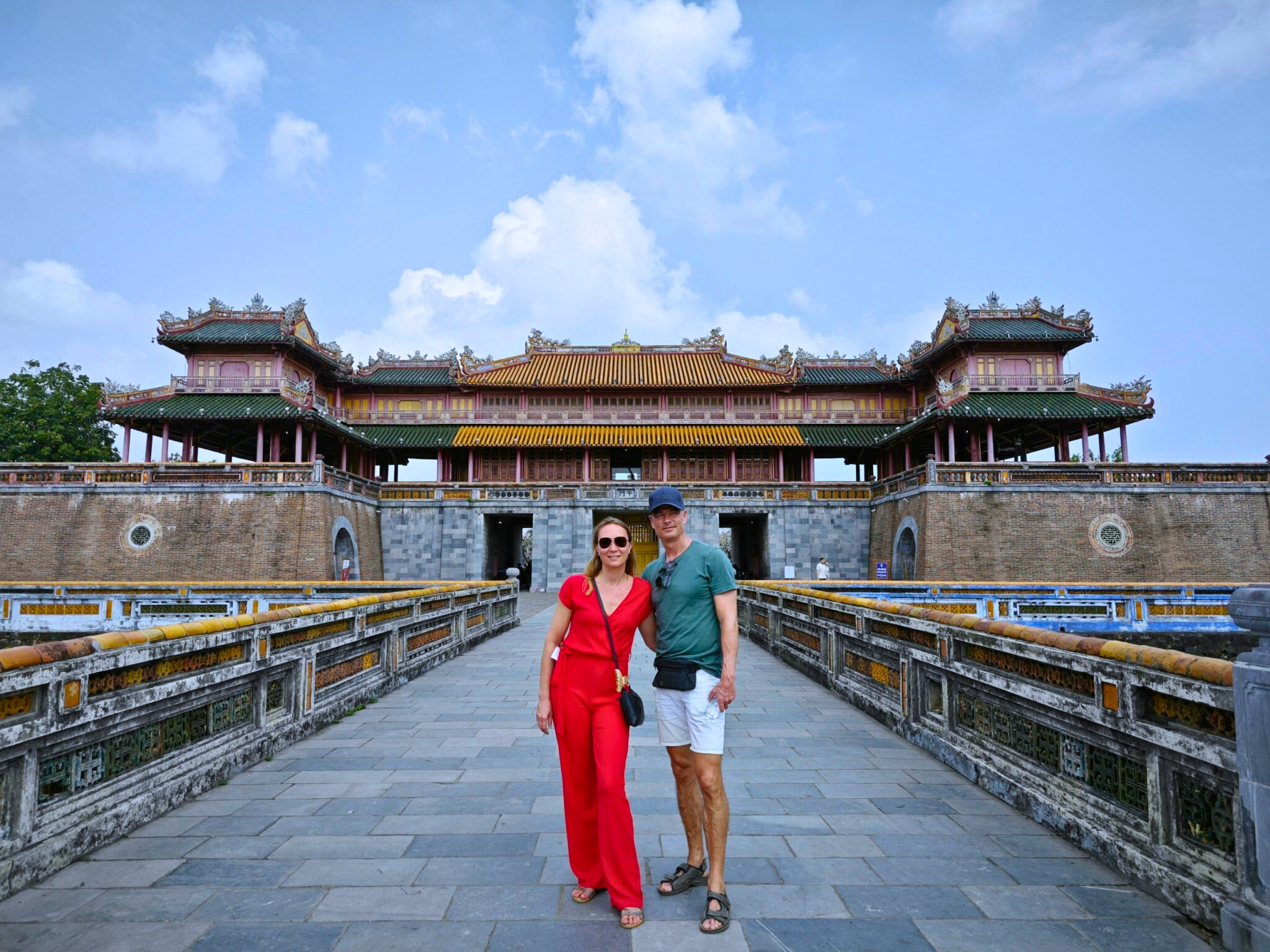1. History of Tu Duc Tomb
The history of Tu Duc Tomb is associated with many manes related to each historical moment. The tomb began construction in 1864 with the participation of fifty thousand soldiers and finished in 1867. At that time, the tomb was called Van Nien Co. To build the tomb on schedule in 6 years, hundreds of thousands of people had to work from early morning until midnight. The tomb is not only the final resting place of King Tu Duc, who ruled Vietnam from 1847 to 1883, but also a poetic and romantic retreat where he spent most of his life.
Tu Duc Tomb is an evidnece to his achievements and character. He began planning his tomb long before his death and oversaw the construction of the tomb from 1864 to 1867. He named the tomb is Khiem, meaning “modest” or “humble”. He also used the tomb as a palace and a rretreat where he could enjoy his hobbies of sailing, hunting, reading and writing poetry. He wrote his own epitaph, engraved on a large stele in the tomb, recording his life and career.

2. Architectural
Tu Duc’s tomeb was orginally called “Van Nien Co” (Eternal Palace). to build the tomb, thousands of people had to work from dawn to midnight in terrible condition, leading to a rebellion. After the rebellion, the court severely critizied the condtruction. Tu duc Tom change the name into “Khiem Cung, meaning “palace of modesty”.
2.1 The Khiem Cung Gate
Khiem Cung Mon is a two-story watchtover-like structure located in the high ground, in line with Du Khiem Ta, in the middle of Hoa Khiem Palace. The gate is adorned with dragon and phoenix motifs, symbolizing the emperor’s power and dignity. During his lifetime, King Tu Duc often came here for pleasure whenever he visited the tomb. This was the place where he often handled state affairs. When he passed away, Hoa Khiem Palace was used as a place to worship King Tu Duc and his Queen’s tablets.
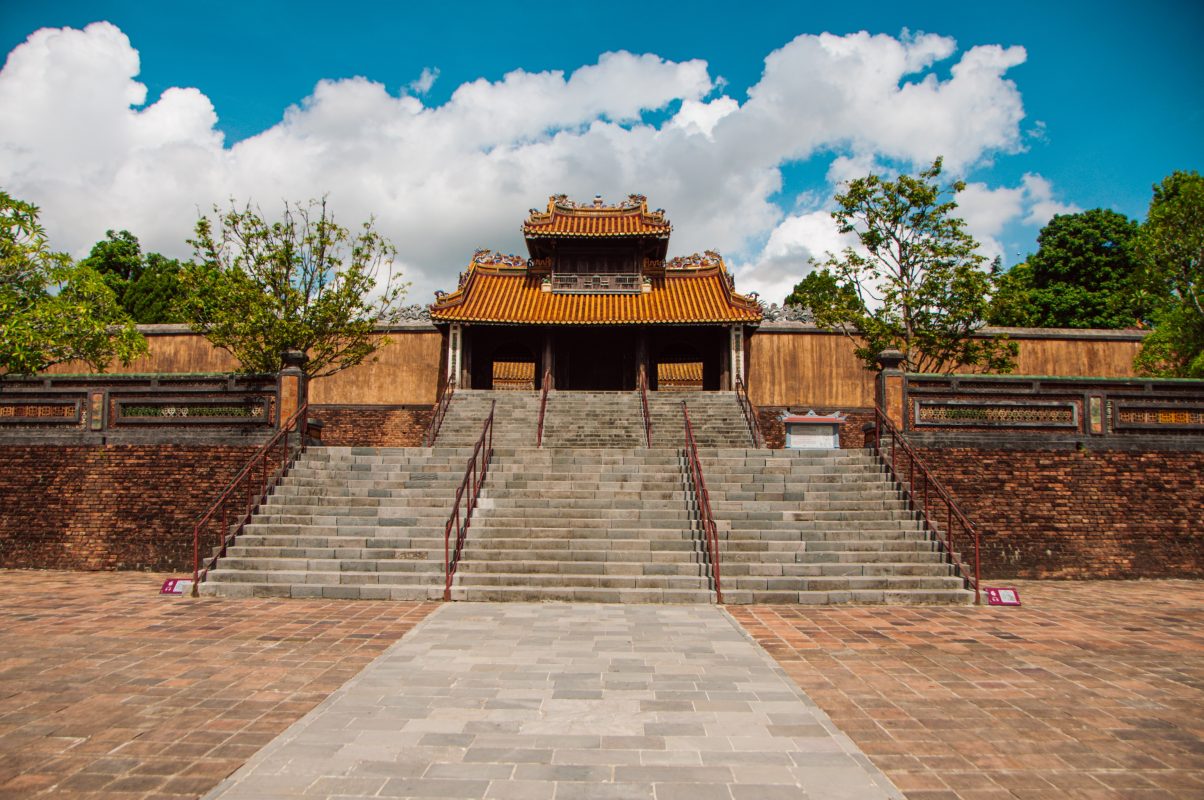
2.2 The Hoa Khiem Temple
Walking through Khiem Cung Mon, you will see Hoa Khiem Temple, a temple that displays the King’s portraits and personal belongings. The temple is square, with eight roofs and four doors, each facing a cardinal direction. The temple is named after the King’s reign name Tu Duc, which means “prosperous virtue”
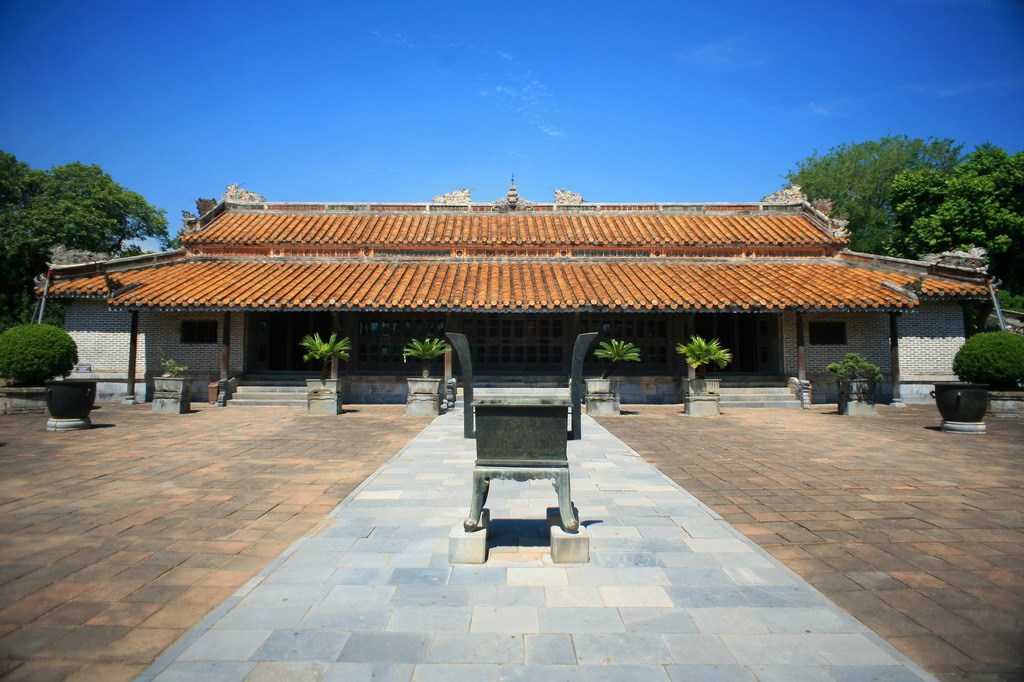
2.3 The Minh Khiem Theater
Minh Khiem Theatre in Tu Duc Tomb is the only ancient theatre in the Hue Tomb Complex. It is one of the most impressive architectural works in the tomb with its quiet columns and prominent patterns. The theatre was used to entertain the emperor as well as for education and propaganda. Minh Khiem Theatre was also where the emperor composed his poems and songs. Today, Minh Khiem Theatre is one of the oldest theatres in Vietnam.
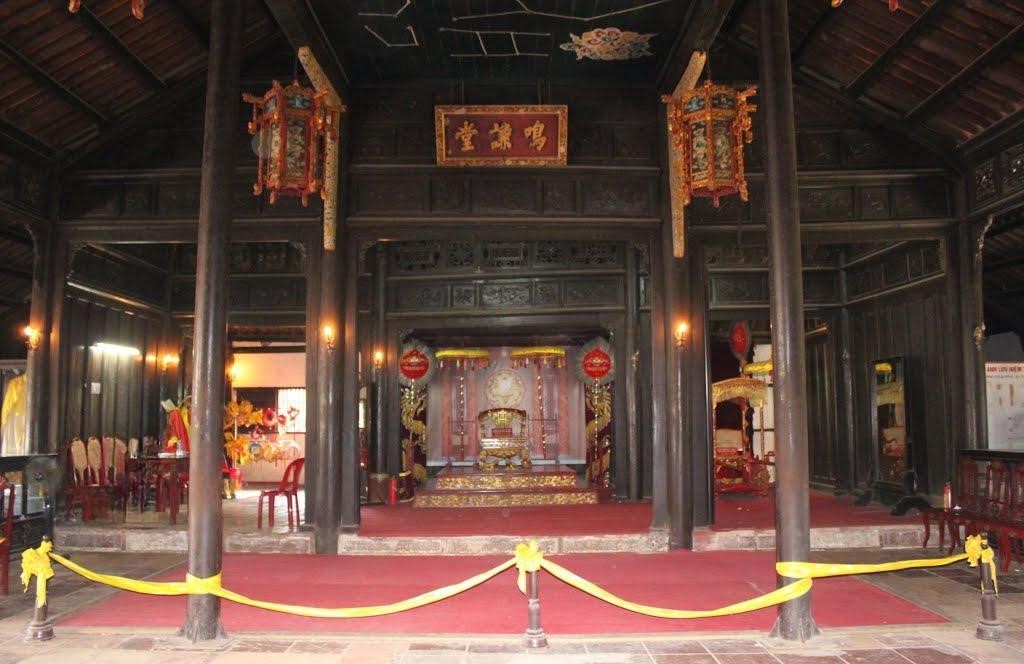
2.4 The Khiem Cung Stele
The Tomb Area is the most important structure in Tu Duc Tomb, so the King’s tomb was built right after the palace.
The first area is Bai Dinh, located right after the worship area. It stands out with two rows of statues, which are said to accompany the emperor on his journey to the other world.
After Bai Dinh, you will move to the Bi Dinh area, where the emperor’s own handwriting is engraved on a 20-ton stone stele. This is the largest stone stle in Vietnam today. Tu Duc’s life, achievements and downfall are all recorded on the stele.
Visitors can reach Emperor Tu Duc’s tomb by walking through a green lake called Tieu Khiem, which is shaped like a crescent moon.
The main tomb area is built from three stone floors. It is unknown whether the emperor’s body is actually here. Legend has it that when the emperor’s body is actually here. Legend has it that when the emperor passed away, his grieving crew sailed along Luu Khiem Lake and buried him in a secret place.
After Tu Duc was buried, all his servants were executed to protect his remains from grave robbers. And so, the mystery of Tu Duc’s final resting place followed them.
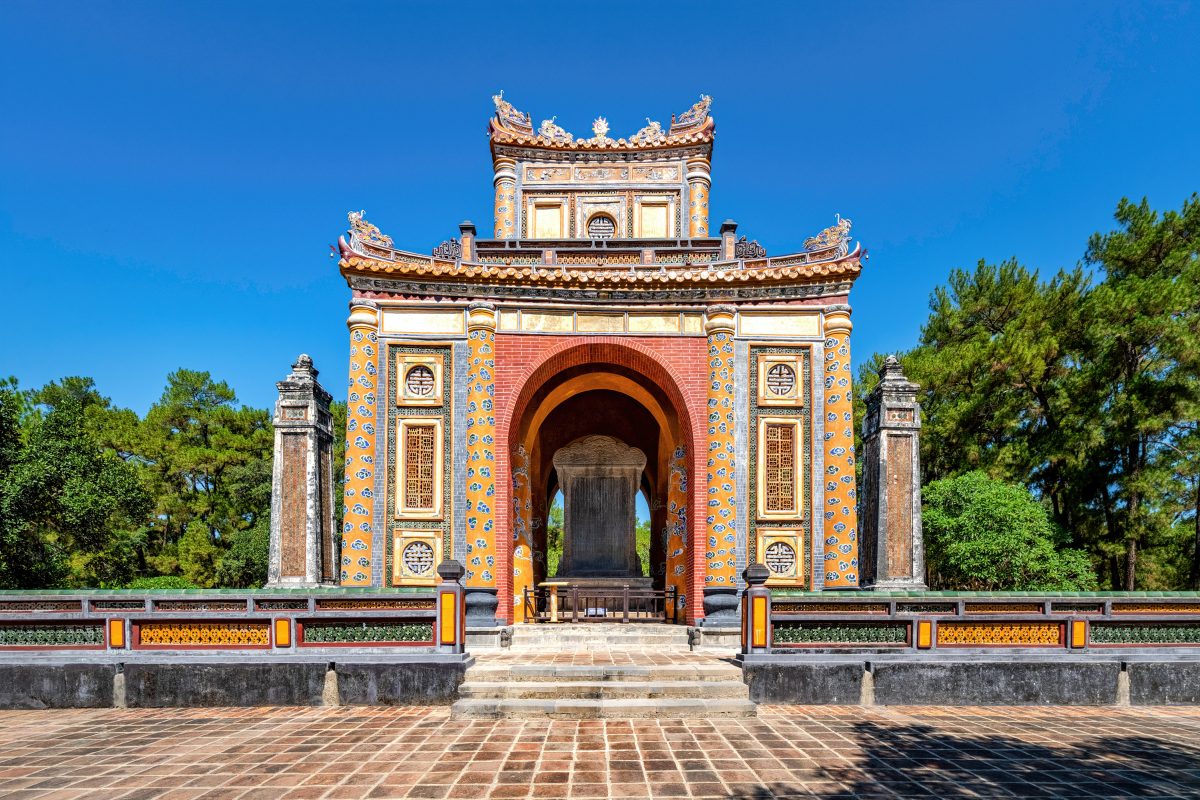
2.5 The Royal Gardens
One of the most striking features of Tu Duc Tomb is the lush landscape that surrounds it. The mausoleum is located on a land area of more than 12 hectares, with more than 50 architectural works and monuments. The emperor himself designed the layout of the gardens, reflecting his poetic and artistic sensibilities.
Upon entering the mausoleum complex, you will be greeted by a peaceful lake called Luu Khiem, which means “retaining affection”. On the lake, there is a small island with a communal house called Pulse Khiem, where the king often recited and composed poems. You can also see lotus ponds and pine forests, which add to the natural beauty of the place.
The gardens are also home to ponds, bridges, and quiet paths that invite you to explore and relax. You can admire the reflections of the monuments on the water or stroll along the shady paths leading to different areas of the mausoleum. The gardens are the perfect place to escape the heat and noise of the city and enjoy the peaceful atmosphere of the royal retreat.
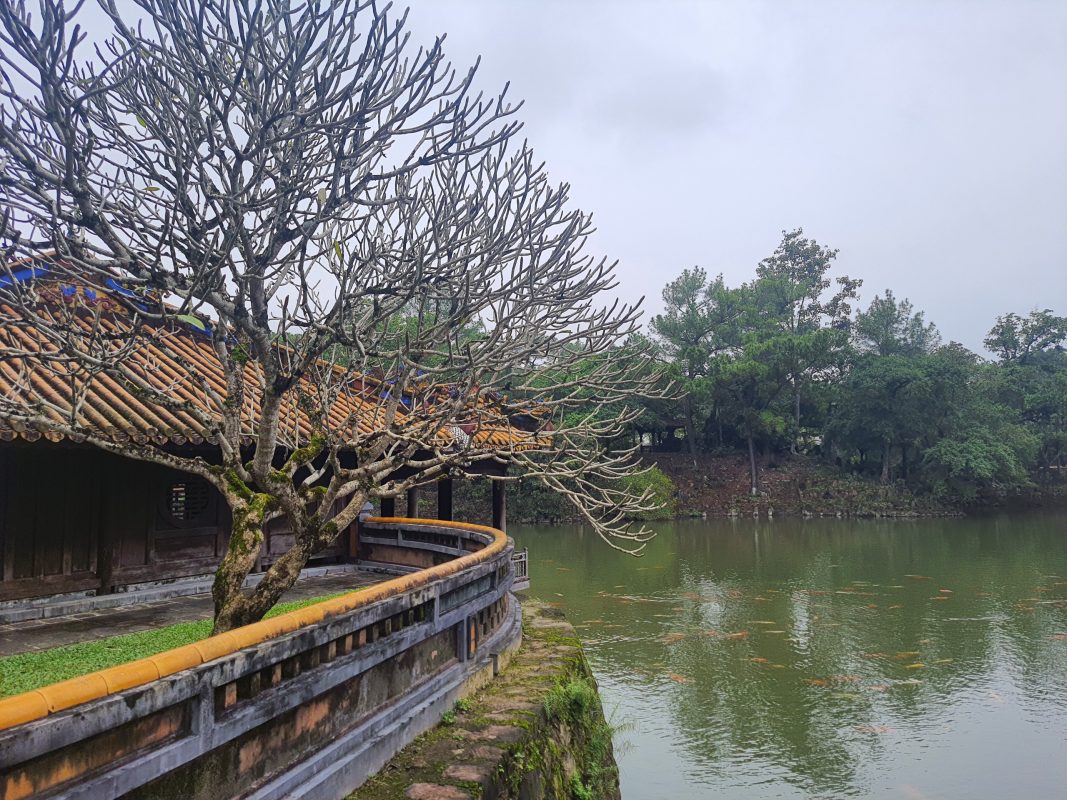
3. Best Time To Visit Tu Duc Tomb
- Address: No. 17/69, Le Ngo Cat Street, Thuy Xuan Ward, Hue City, Thua Thien Hue Province
- Opening hours: 7:30 am to 5:30 pm daily
- Entrance fees: 150,000 VND per adult, 30,000 VND per child
The Tu Duc Tomb is open daily from 7:00 a.m. to 5:30 p.m., entrance fee is 150,000 VND (about 6.5 USD) per person.
The best time to visit the mausoleum is in the morning or late afternoon when the weather is cooler and the light is softer. You should wear polite, comfortable clothes because the mausoleum is a sacred and historical place.
The best time to take photos is in the morning or at sunset when the light is soft and golden. You can catch sunrise or sunset at the lake, creating a beautiful contrast between the sky and the water.
Book Hue Royal Tombs Tour 1 day to visit Tu Duc Tomb and other tombs.


